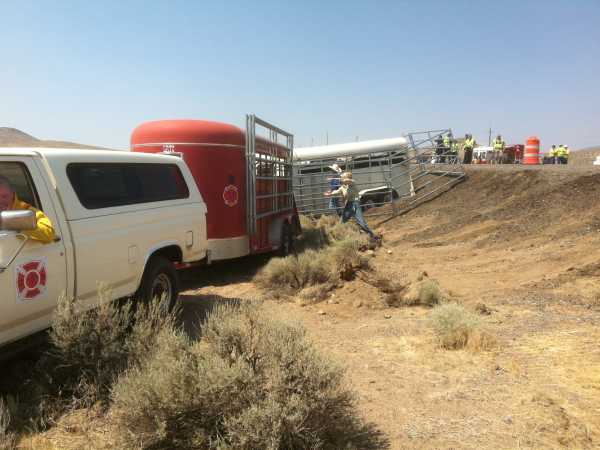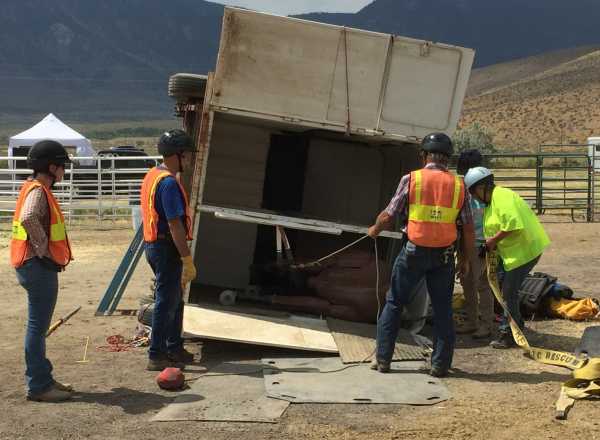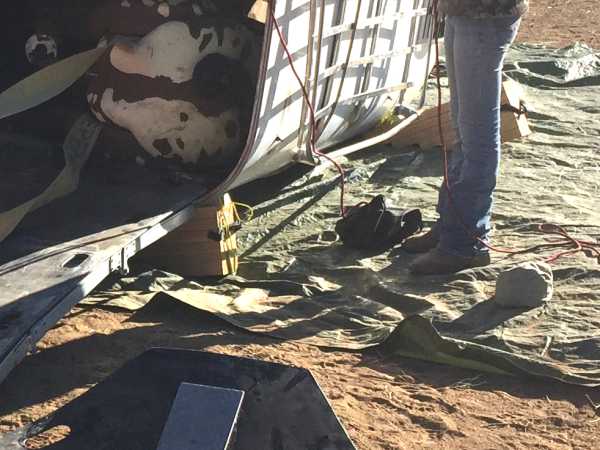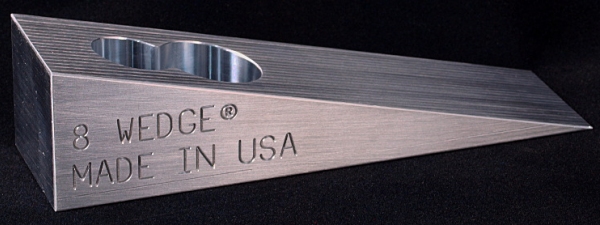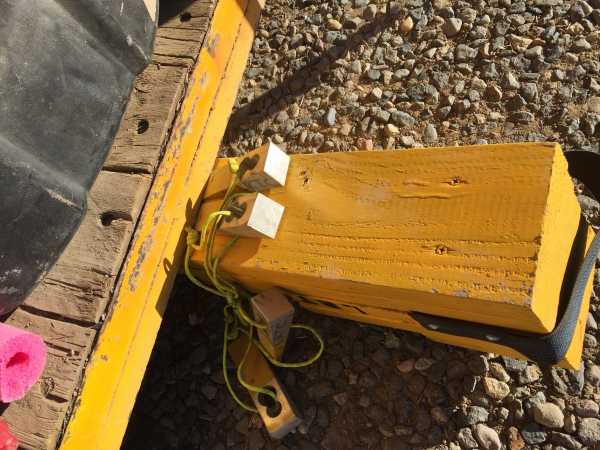
|
Least Resistance Training Concepts
|

|

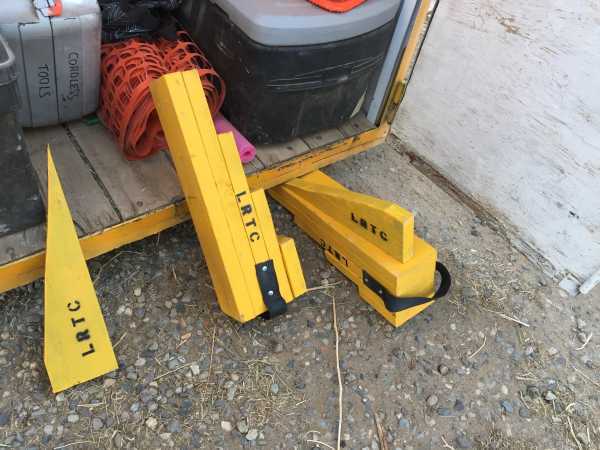
Our "8 Wedges," normally used for forcible entry - prying open jammed doors or gaining purchase points for spreader jaws - can also help fill gaps between step chocks and overturned vehicle bodies.
The "8 Wedge" used by our team.
|
| KEY POINTS |
- Assess the scene. Choose locations for cribbing and step chocks that are likely to provide the most stable support.
- Surface area is your friend. Maximize surface contact with the ground. Maintain as much surface contact with vehicle elements as may be practicable.
- Don't overdrive step chocks and wedges under vehicles to the point that doing so compromises surface contact.
- Obtain more "snug contact" using wedges if appropriate, but be careful that the wedges don't improperly redistribute the load.
- Use stakes to hold step chocks in place where appropriate when needed to prevent them from creeping out during operations. Flag the stakes with ribbons or mark with cones.
- Safety check all stabilization gear before laddering or entering the trailer.
- Recheck and readjust all stabilization gear if an extrication is going to involve a prolonged operation, when cutting and changing the structural characteristics of the trailer, and if the animals shift and alter the trailer's weight distribution.
- Maintain safety awareness when breaking down the stabilization gear as the vehicle may shift after animals have been removed or if the trailer's integrity has been altered. Safety protocols don't end until the team has packed up and is back in quarters!
Return to Part One
Return to Information Sheets and Resource Guides
Return to Sample Incident Responses
Return to LRTC TLAR / EVAC Page

The training information presented in these information sheets and guides is offered for illustrative and volunteer refresher purposes only. It is not a substitute for actual hands-on training. |
